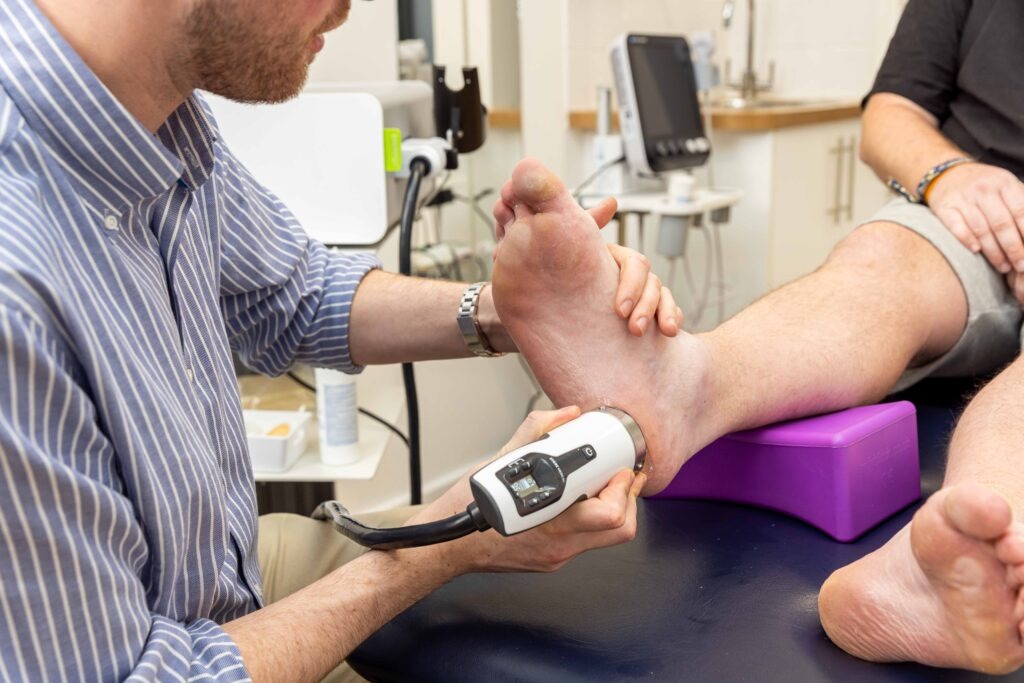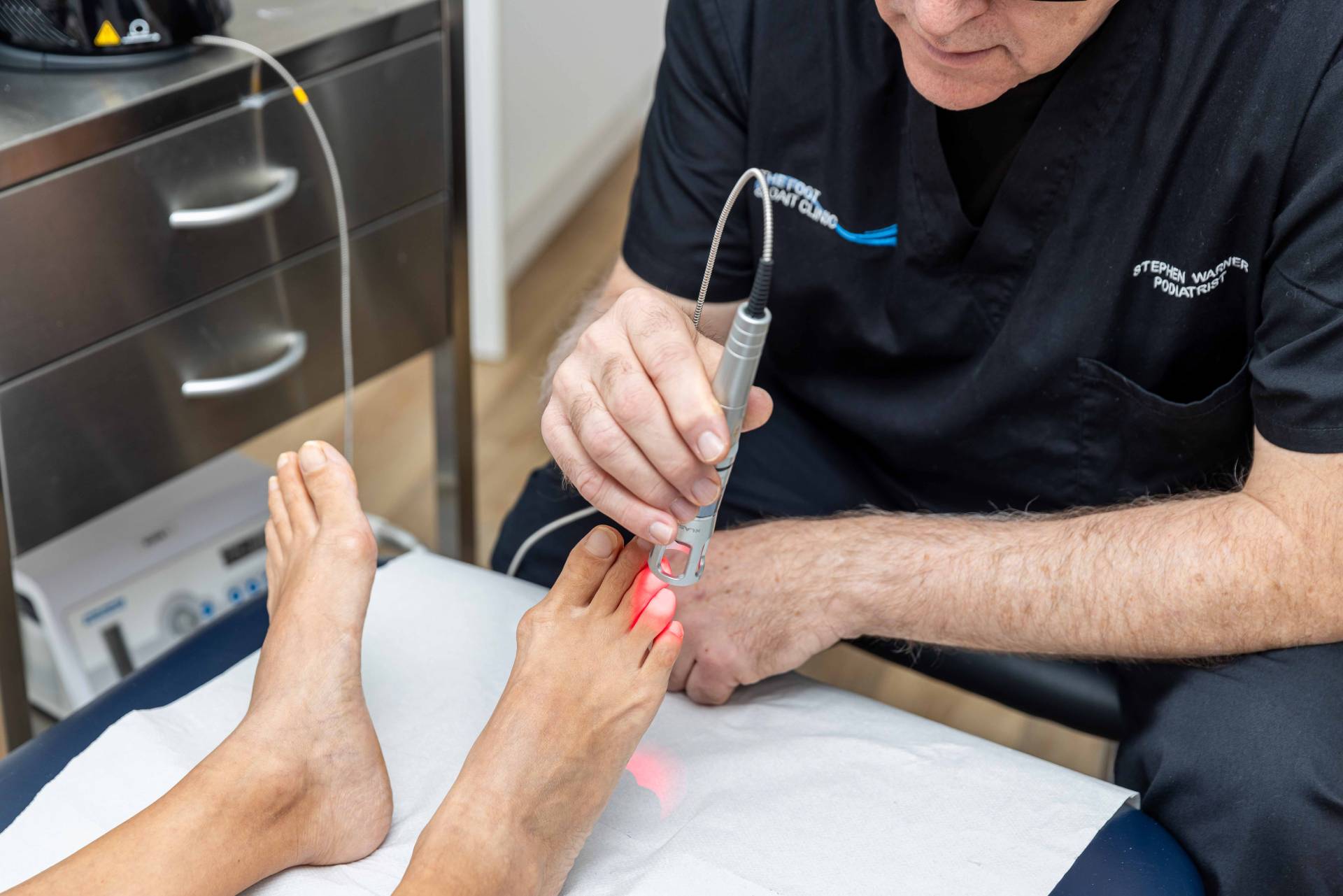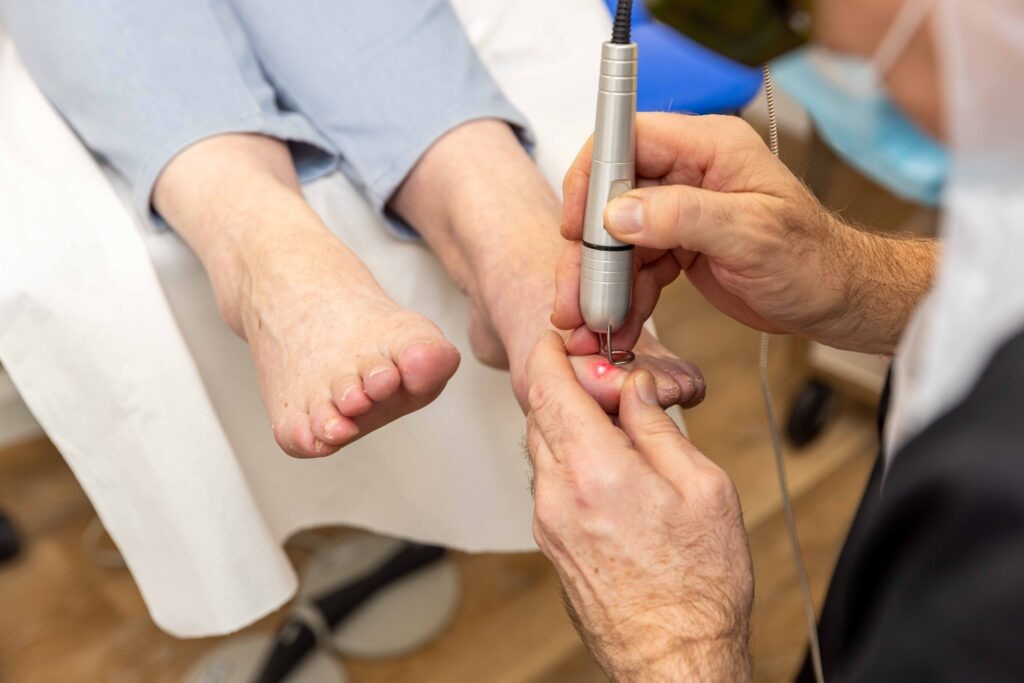Shockwave therapy treatment uses an acoustic wave that is pulsated at a high-energy frequency, directly to the painful or affected area.
Most treatments are applied by a therapist using a hand-held device, which turns compressed air into low-energy sound waves. Light pressure is applied and the device is moved across the damaged areas that require treatment.
Shockwave therapy has two main ‘modes of action’ that can help with persistent pain.
Firstly, the shockwaves work to ‘desensitise’ nerve endings which can immediately reduce pain in the local area. Secondly, the waves stimulate blood flow in the area, causing a small amount of localised inflammation.
In the days immediately following the treatment, the body naturally tries to heal the inflammation and in doing so, encourages the regeneration of cells, repairing damaged tissue and reducing pain.
Shockwave therapy can also help with issues relating to scar tissue. As scar tissue is much denser and much less elastic than normal tissue, the sound waves can help break it down, improving mobility and reducing discomfort.

K-Laser Dynamic Therapy is an excellent multidisciplinary therapy. K-Laser Therapy is a cutting-edge procedure that uses lasers to treat a wide range of different injuries and conditions. K-Laser Therapy utilizes red and near-infrared light to regenerate tissue.

Laser therapy uses selected wavelengths of light to stimulate key molecules in human tissues. Decades of medical research have identified the wavelengths, energy level and frequencies that induce changes in cellular metabolism (Photobiostimulation), for instance melanin absorbing sunlight changes skins pigmentation.
K-Laser delivers energy from superficial to deep tissues activating a cascade of photochemical reactions that promotes cell function, enabling treated tissues to accelerate the stages of the healing process and reduce pain sensation. This is a safe and non-invasive technique that uses the body’s own reparative processes.
K-Laser therapy penetrates deep into soft tissues, joints and bones, it provides energy to the cells enhancing the natural regenerative processes. By accelerating tissue metabolism and microcirculation, cells assimilate nutrients, dived and get rid of waste and inflammatory products more efficiently. As a result tendons, ligaments and muscles repair faster, with less scarring and reduced pain and inflammation.

Our patients choose The Foot & Gait Clinic for advanced therapies because of our combination of expertise, technology, and results-driven care.
Shockwave therapy is commonly used for plantar fasciitis, Achilles tendon pain, shin splints, bursitis, heel spurs, and tendon injuries that have not improved with other treatments.
K-Laser is used for musculoskeletal pain, arthritis, soft tissue injuries, nerve pain, and scar tissue. It stimulates tissue repair and reduces inflammation.
Most patients describe shockwave as mildly uncomfortable but tolerable. Laser therapy is painless and often described as a gentle warming sensation.
This depends on your condition. Many patients require a short course of 3–6 sessions, but your podiatrist will advise based on your progress.
Yes. Both treatments are safe, non-invasive, and supported by clinical research. They are carried out only by trained professionals.
Most patients return to normal activities immediately. Some may experience mild soreness after shockwave, which typically resolves within 24–48 hours.
Get in touch